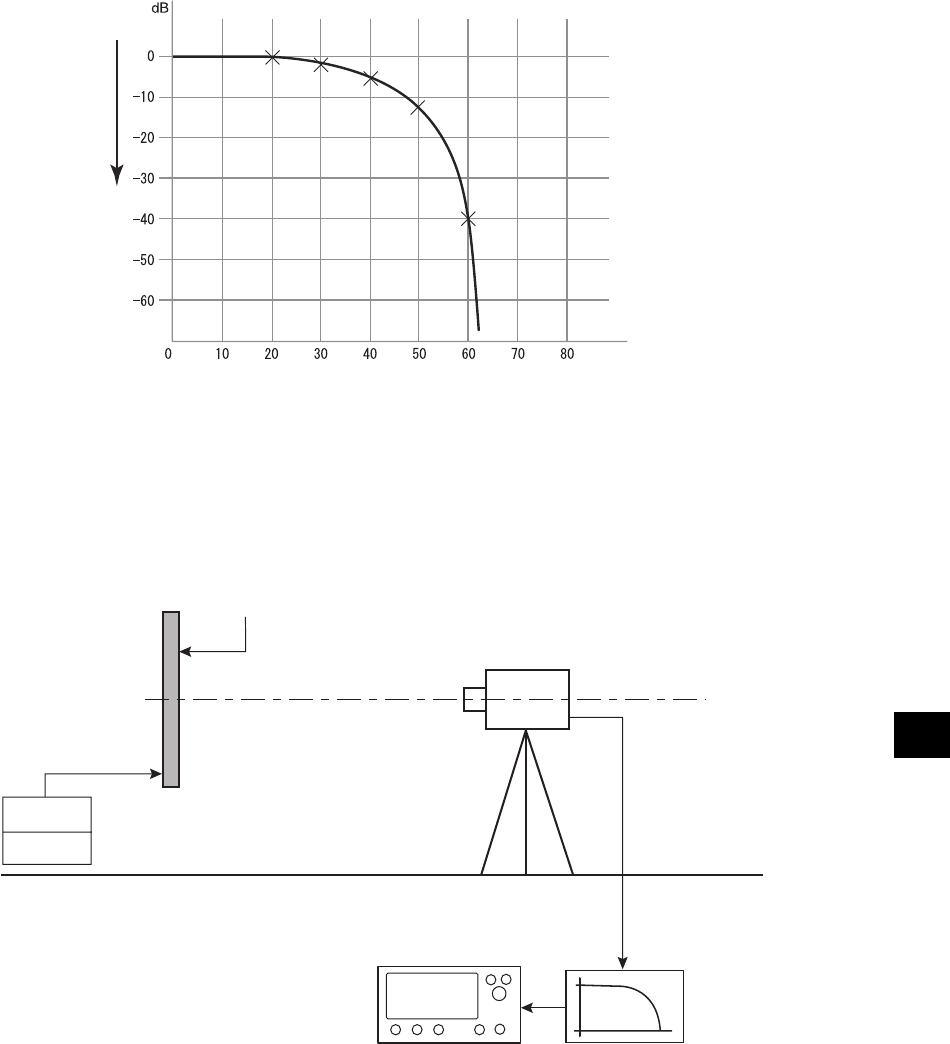
97
Explanation Section
(2)JEITA Method
With the contrast method, the amount of flicker does not depend on its frequency, and is calculated based on the
AC and DC components of the measured luminance.
However, human sensitivity to flickering starts to drop gradually at about 30 Hz, and when the frequency exceeds
60 Hz, it is no longer possible for humans to sense it.
From this, it is possible that even if a flicker of a large amplitude and frequency of 60 Hz or higher exists the human
eye cannot recognize it as a flicker.
Thus, with the JEITA method of flicker measurement, it is very important to know the exact amplitude and fre-
quency of flicker energy, in addition to the AC /DC component ratio, that is defined by the contrast method.
With the JEITA method, the measuring devices shown below are required for measurement.
Fig. 3 shows that the output signal (Fig. 1) from the luminance meter (used to measure the LCD) is guided to the
integrator.
To reconstruct what is seen by the human eye, the integrator sends the signal through a filter that decreases the
sensitivity because of frequency difference, and then outputs it to the FFT analyzer.
The signal is processed by the FFT analyzer (Fast Fourier Transform Analyzer), and is displayed in a form of
energy distribution of frequency components (Fig. 4).
level
Frequency HzFig. 2
LCD modulel
Fig. 3
Display surface
Luminance meter
Drive signal
Drive power
FFT analyzer
Integrator


















